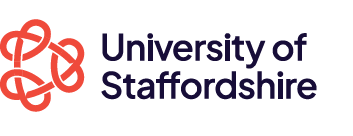Module Descriptors

LOWER LIMB PAEDIATRIC PATHOLOGIES AND THERAPIES
SPOR70959
Key Facts
Health, Education, Policing and Sciences
Level 7
20 credits
Contact
Leader: Helen Branthwaite
Email: H.R.Branthwaite@staffs.ac.uk
Hours of Study
Scheduled Learning and Teaching Activities: 15
Independent Study Hours: 185
Total Learning Hours: 200
Assessment
- PORTFOLIO - 2500 WORDS weighted at 100%
Module Details
INDICATIVE CONTENT
This module will examine the biomechanical concepts of the body, particularly the lower limb in the paediatric patient. Studying this module will enable you to define and explain the relationship of kinematics to anatomy and physiology of the paediatric musculo-skeletal system. You will:
- study the relationship of anatomy to mechanics and explore the differing perspectives of the descriptive anatomist to that of the clinical biomechanist who requires an understanding of the dynamics of functional anatomy of human movement.
- explore the concepts of joint axes and their fluidity of position in space and time during gait and relate these concepts to those of joint neutral and joint congruency positions and core stability.
- use understanding of the mechanical effectiveness of such structures to interpret positional relationship of joint axes and timing of action with respect to locomotion and other functional activities.
- explore the relationship between developmental processes and observed clinical pathology,
- be expected to demonstrate practical application and debate on the origins of the clinical biomechanical evaluation process.
The clinical course of biomechanical based disorders is commonly influenced by various environment and activity related factors. After studying this module, you will be expected to identify and appropriately adjust those factors so as to minimise their adverse impact on treatment outcomes. In this module you will therefore explore the embryological and developmental origins of various structural deformities.
- study the relationship of anatomy to mechanics and explore the differing perspectives of the descriptive anatomist to that of the clinical biomechanist who requires an understanding of the dynamics of functional anatomy of human movement.
- explore the concepts of joint axes and their fluidity of position in space and time during gait and relate these concepts to those of joint neutral and joint congruency positions and core stability.
- use understanding of the mechanical effectiveness of such structures to interpret positional relationship of joint axes and timing of action with respect to locomotion and other functional activities.
- explore the relationship between developmental processes and observed clinical pathology,
- be expected to demonstrate practical application and debate on the origins of the clinical biomechanical evaluation process.
The clinical course of biomechanical based disorders is commonly influenced by various environment and activity related factors. After studying this module, you will be expected to identify and appropriately adjust those factors so as to minimise their adverse impact on treatment outcomes. In this module you will therefore explore the embryological and developmental origins of various structural deformities.
ADDITIONAL ASSESSMENT DETAILS
A collection of evidence presented as a portfolio supporting the attainment of the learning outcomes. This will include reflection of current concepts and application of paediatric development to current therapeutic practice through case study work. Assessment addresses all LO 1 -4
LEARNING STRATEGIES
This module is a distance learning module with structured live webinars arranged throughout the module to create discussions and allow for formative feedback on tasks. There are active discussion boards used in blackboard which allow for classroom concepts to be debated as well as individual tasks that can be presented in tutorials to gain structured feedback on progress. All pre course reading materials and course documentation will be available through blackboard. It will be necessary for students to engage fully in the Black Board activities and tasks and they are encouraged to participate in the discussion forums within blackboard to enhance the teaching / learning experience. This will consist of several Activities and Tasks, from which students will be asked to actively contribute to electronic based discussions.
LEARNING OUTCOMES
1. Develop a systematic understanding of paediatric lower limb development in relation to the therapeutic management of presenting pathology.
Enquiry, Learning and Knowledge and Understanding.
2. Research, evaluate and critically debate the therapies available when managing a paediatric patient with neuromuscular, orthopaedic and Rheumatoid diseases.
Communication and Problem Solving
3. Demonstrate a comprehensive understanding of paediatric lower limb therapies and reflect on the application of these therapies in different clinical specialities.
Enquiry, Learning and Reflection.
4. Consider the origins of pathology from evolutionary, genetic, developmental, physiological or traumatic sources and explain the effects it may have on patient biomechanics.
Knowledge and Understanding
Enquiry, Learning and Knowledge and Understanding.
2. Research, evaluate and critically debate the therapies available when managing a paediatric patient with neuromuscular, orthopaedic and Rheumatoid diseases.
Communication and Problem Solving
3. Demonstrate a comprehensive understanding of paediatric lower limb therapies and reflect on the application of these therapies in different clinical specialities.
Enquiry, Learning and Reflection.
4. Consider the origins of pathology from evolutionary, genetic, developmental, physiological or traumatic sources and explain the effects it may have on patient biomechanics.
Knowledge and Understanding
RESOURCES
Standard library and IT facilities.
REFERENCE TEXTS
Burns, J. (2012) Childhood Disorders of the foot and lower limb. Nova. ISBN - 9781619420335
Evans, A. (2010) Paediatrics Handbook. Churchill and Livingstone. ISBN - 9780702030314
Postema, K. (2018) Pedorthic footwear:assessment and treatment Berjalan. https://www.berjalan.org/pedorthic-footwear/
Evans, A. (2010) Paediatrics Handbook. Churchill and Livingstone. ISBN - 9780702030314
Postema, K. (2018) Pedorthic footwear:assessment and treatment Berjalan. https://www.berjalan.org/pedorthic-footwear/
SPECIAL ADMISSIONS REQUIREMENTS
Students have to be either an allied health professional registered with the HCPC, Sports therapist or biomechanist who support allied health professionals or a medical professional. All whom are involved in musculoskeletal practice.
WEB DESCRIPTOR
This module focuses on the biomechanical based disorders which are commonly influenced by various environment and activity related factors. After studying this module, you will be expected to identify and appropriately adjust for those factors so as to minimise their adverse impact on treatment outcomes. There will be particular focus on the origins of dysfunction with reflection on development, genetics and evolution.